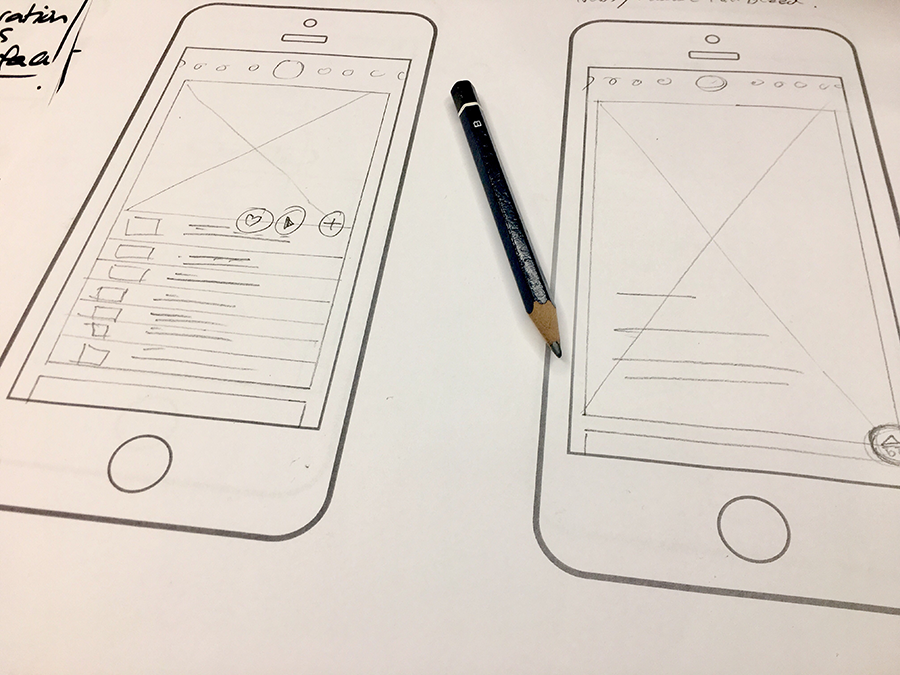
Does My Business Need A Mobile App
Table of Contents
TLDR
Most apps fail.
Users are overwhelmed, impatient, and quick to uninstall.
Build an app if:
- It solves a specific, frequent problem
- It does what web can’t (e.g. GPS, offline, camera)
- You can commit to long-term support
Don’t build if:
- It duplicates your website
- You’re doing it “because competitors did”
- AI or existing tools already solve it better
Rule of thumb: If your app won’t be missed when deleted, don’t build it.
Introduction
Mobile devices dominates modern life. In the UK, the average person spends over three hours a day on their phone, most of that time inside apps. From social feeds to shopping baskets, mobile apps shape how we live, work, and buy.
But here’s the catch: while usage is higher than ever, so is the competition. App stores are saturated. Discovery is hard. Retention is even harder. And the average user spends 80% of their time in just a handful of favourites. App fatigue is real, and getting fiercer.
Still, I regularly meet founders and marketing leads who feel pressure to “have an app” because their competitors do, or because it signals innovation. But that’s rarely enough. A mobile app can be a brilliant asset, but only when it solves a specific problem, fits into people’s daily habits, and earns its place on a crowded home screen.
Im my career, I have built mobile apps that quite literally save lives (Grdian), support people with mental health issues (AiME), and reinvent how people engage with sport, retail, or smart devices. But we’ve also told ambitious founders notto build, because the value case wasn’t clear enough. We don’t chase launches. We chase outcomes.
This guide is the conversation I wish more businesses had before investing five or six figures. It explores where apps win, where they fail, and how AI is reshaping the space. It’s grounded in UK usage data, commercial thinking, and 15+ years of lived experience.
If you’re considering a mobile app, use this to sharpen your thinking, or drop me a line and I’ll help you sense, check the plan.
• • •

Custom Mobile Apps in 2025: Usage is High, Competition is Brutal
Let’s start with the obvious: your customers live on their phones. In the UK, smartphone users now spend 3 to 4+ hours per day glued to their devices, and 80% of that time is spent in mobile apps, not web browsers. Globally, it’s even higher. Usage isn’t slowing down.
But here’s the problem: everyone knows that. App stores are now bloated ecosystems, Google Play hosts nearly 3 million apps, and Apple’s App Store isn’t far behind. In this environment, your app isn’t just competing with your direct rivals. It’s up against TikTok, WhatsApp, Amazon, Gmail, and Spotify for attention.
And attention is finite. The average person uses just nine apps a day, and around 30 per month. Launching a new app is like pitching a pop up shop in Times Square, you might be seen, but staying open is another story. One analysis estimates that only 1 in 1,000 new apps achieves any meaningful traction .
Despite that, in the mobile market, app downloads continue to grow. In 2025, global downloads are projected to hit 299 billion, with app revenue surpassing $935 billion. So the question isn’t whether apps are relevant. It’s whether your own mobile app would matter to your target audience in the moments that count.
This is why I tell every founder we work with: high usage doesn’t guarantee opportunity. It’s not about launching an app, it’s about earning a space in someone’s daily routine. And in 2025, that’s a far tougher brief than most realise.
• • •

The App Fatigue Problem: Why Users Uninstall
Once you have a clear sense of your business goals, the next key step is gaining a detailed understanding of your target customers and Even with record-breaking screen time, users are deleting apps faster than ever. And it’s not because they’re short on storage, it’s because they’re short on patience.
Studies show that 71% of mobile users abandon a new app within 90 days . Worse still, many apps don’t even make it past the first week. One crash, and 45% of users will delete it immediately . That’s the bar now. Flaky UX? Confusing value? Annoying in app notifications? You’re gone.
This is the reality of app fatigue, a growing reluctance among users to install or keep apps that don’t instantly prove their worth. Most people aren’t excited to download “another app.” In fact, only 35% of smartphone users in the UK download even one new app per month . They’ve been burned too many times.
We saw this first-hand with the Catch app. Originally just a booking tool for anglers and fisheries, it’s since evolved into a fully-featured platform, session notes, AI fish recognition, blueprints, loyalty rewards, all in one intuitive experience. But features alone weren’t enough. We overhauled the UX to work seamlessly in bright outdoor conditions, reduced visual clutter, and made key actions (like logging catches) usable with one hand on the bank. The result? A 50% increase in subscriptions and growing loyalty, even in the off-season.
But even great design can’t fix a weak proposition. If your app doesn’t deliver daily utility or solve a specific pain, it won’t survive. Remember: users spend 80% of their mobile time in their top 3 apps . To make that shortlist, you need to be exceptional, not just functional.
So before writing a single line of code, ask: “Would someone miss this app if it vanished?” If the answer’s vague, you’re not ready to build.
• • •

App Development: Clear Cases for Going Native
Despite the pitfalls, there are moments when a mobile app is exactly the right move. The difference? Purpose. When an app solves a real problem in a way no other channel can, it earns its keep.
Let’s start with Catch. What began as a simple booking tool for fisheries is now a feature rich companion for anglers. Session notes, AI fish recognition, location blueprints, and loyalty rewards are all designed for real-world conditions: spotty reception, wet fingers, one-handed use. The app doesn’t just offer convenience, it becomes part of the fishing experience itself for their app users.
Apps work best when three things align:
1. High Frequency of Use
If your service is accessed daily or weekly, an app can streamline that interaction. Think ecommerce, fitness, or food delivery. In fact, UK consumers who install a retailer’s app are up to 60% more likely to make repeat purchases .
2. Better Customer Experience Than Mobile Websites
In Mobile app development, native mobile apps are faster, smoother, and more responsive. They can cache data offline, use gestures, and integrate with device features like GPS, camera, and push notifications. That’s why brands in food, fragrance, and ecommerce are investing in app only experiences, think voice commands, smart device control, or one-tap reordering. These aren’t luxuries; they’re friction reducers that turn casual users into loyal ones.
3. Personalised, Customer loyalty
The best apps adapt. Think of an app that remembers your fishing spots, suggests weather-based tactics, or nudges you when your favourite lake has a cancellation. These aren’t just features, they’re hooks. The kind that turn an app from a utility into a companion.
Apps also shine in customer loyalty programs and community-building, two things websites often struggle to execute with the same emotional impact.
So yes, mobile apps can drive retention, growth, and brand affinity, but only if they deliver unique value at high frequency. If your idea just duplicates your website, it’s not an app. It’s overhead.
• • •

Sector-Specific Expectations: B2B vs B2C
One of the biggest mistakes I see founders make is copying what’s working in a different app marketplaces. Just because a B2C app drives huge downloads doesn’t mean a B2B audience will behave the same, or vice versa.
B2C: High Reach, High Churn
Consumer-facing apps dominate the download charts, retail, food delivery, entertainment, fitness. But they also churn users at brutal rates. On average, more than half of new B2C users uninstall an app within 30 days. In categories like gaming and dating, that figure can hit 60% or more.
The apps that survive tend to offer frequent, habitual utility, banking, news, messaging, shopping. UK users show strong long-term loyalty to apps like mobile banking (used weekly by millions), while travel, recipe, and one-time event apps get uninstalled fastest .
B2B: Lower Volume, Deeper Retention
In contrast, B2B apps often serve fewer users, but they stick around longer. Productivity tools, internal dashboards, or booking platforms used in daily workflows tend to see much higher retention. Enterprise clients aren’t uninstalling Slack or Zoom after one login.
We saw this distinction in practice with Catch. While it’s a B2C platform at face value, its business-facing functionality for fishery owners (calendar, CRM, reports) behaves more like a B2B SaaS product, with higher stickiness and longer-term retention patterns .
Strategic Insight
Don’t just benchmark your idea against “top apps.” Benchmark it against user behaviour in your sector. Ask:
- Is there already app behaviour in your space?
- Do users expect mobile access, or do they currently manage fine via you website or web app?
- Would a mobile app remove friction or just replicate existing steps?
The context matters. Consumer audiences might download impulsively, but they’ll also delete ruthlessly. B2B users may require onboarding and sales effort, but once you’re in, you’re often embedded.
• • •

The True Cost of Building and Maintaining an App
If, after thorough analysis, you decide moving forward with a mobile app is the right choice, consider an MVP (minimum viable product) Let’s be blunt, building a proper mobile app isn’t cheap. And it’s not just a “one-time” cost. A good app is a living, breathing product that needs to evolve alongside your users, your tech stack, and the platforms it runs on.
Initial Build: From £30k to £200k+
In the UK, a simple app that professionally built might start at £30,000–£50,000. Add user accounts, database integration, or payments and you’re quickly into the £80k–100k range. Custom backend? Cross-platform build? Expect six figures .
At Ronins, we’ve scoped apps for every shape and size, from quick MVPs to IoT-connected products. In each case, the real cost isn’t just in design or development. it’s in decision-making. What do you build now? What do you defer? Where’s the long-term value?
Ongoing Maintenance
Apps aren’t “set and forget.” You’ll need:
- Regular updates (to support iOS/Android changes)
- Security patches
- Crash fixes and bug tracking
- Backend hosting and database costs
- Customer relationship support channels
- App Store annual fees (Apple charges £79/year; Google’s is a one-off)
Plus, if your app uses paid APIs (like maps, messaging, or AI), those costs scale with usage. Miss these during planning, and your margin disappears overnight.
Don’t Forget Marketing
This is the line item most founders ignore: distribution. Publishing an app is not the same as acquiring users. Unless you have a high-traffic web presence or an existing user base to migrate, you’ll likely need:
- Paid ads to drive downloads
- Landing pages to explain why the app’s worth it
- Onboarding emails or in-app tutorials
Even the best apps die in silence if no one knows they exist.
The Hidden Cost of “Almost Right”
A few years ago, we worked with a large UK food outlet, The original UK app had been heavily invested in, but wasn’t fit for scale. Our advice? Rebuild from scratch. It wasn’t an easy conversation, but it was the right one. The reengineered app jumped from one star reviews to five, boosted engagement, and paid for itself in weeks .
That’s the difference between launching fast and launching right.
• • •

The AI Shift: Are We Heading Toward a Post-App World?
BThere’s a growing narrative in tech circles: Are we moving beyond apps altogether? With the rise of generative AI and digital assistants, some believe the future isn’t in launching yet another app, it’s in removing the need for one.
Think about it. Instead of opening a train app, you might just say, “Book me a return to Manchester tomorrow.” Instead of logging into a shopping app, you tell your AI assistant, “Reorder my usual groceries.” And it gets done, without you ever tapping an icon.
A Consolidation of Function
In 2025, tools like ChatGPT, Claude, and Google Gemini are already replacing multiple niche apps. One recent TechRadar article showed how ChatGPT now handles note-taking, translation, and scheduling, previously spread across three separate tools .
Users are trading app-juggling for simpler, voice- or text-driven interfaces. The goal? Less friction. More results.
What That Means for Founders
If your app idea is single-function (e.g. a calorie tracker, basic translator, or static directory), there’s a good chance AI already does it, or soon will. And that’s a hard place to win attention.
But if your app does what general tools can’t, blend location data, real-world interaction, sensors, payments, community, or personalised workflows, you’re still in the game.
With Catch, for example, we embraced AI instead of fearing it. The app uses machine learning to auto-identify fish species and generate catch reports, saving anglers time while boosting their data accuracy. The AI is invisible, but it elevates the user experience.
AI as Enabler, Not Replacement
The smartest move? Treat AI as a layer, not a threat.
Use it to:
- Streamline onboarding
- Power personalised recommendations
- Support in-app customer service
- Automate testing and feedback loops
In other words: Don’t compete with AI, build with it. Apps aren’t dead. But lazy, narrow-purpose ones? They’re living on borrowed time.
• • •

When You Don’t Need an App
INot every business needs a mobile app. And sometimes, building one too soon, or for the wrong reasons, can cost more than it returns.
We’ve advised multiple founders to pause or pivot their app ambitions. Not because we’re anti-app, but because the proposition wasn’t clear enough, or the cost couldn’t be justified.
Here’s how to know when not to build:
You’re Duplicating Your Website
If your app does the same thing as your responsive mobile site, just in a different wrapper, it’s not worth the overhead. Users won’t download it, let alone keep it. Instead, optimise your web experience. Improve speed. Shorten journeys. Add offline capabilities with PWAs (progressive web apps).
You’re Missing a Repeat-Use Case
Apps live and die by frequency. If your existing customers only need your service once a year, an app is the wrong format. That’s why travel, recipe, and real estate apps have such high uninstall rates .
There Are Better Existing Tools
Why build a booking app if Calendly or Square Appointments covers 90% of your needs? Why launch a storefront if Shopify or Etsy already gives you reach and scale? Standalone apps only make sense when they offer a distinct experience or functionality that can’t be replicated.
You Haven’t Validated the Demand
If your product is still pre revenue or pre traction, a mobile app is often overkill. You’ll spend time and budget on something untested. Instead, consider a clickable prototype, a no code solution, or a lean MVP. See how people engage before you go build a full native app.
You’re Doing It “Because Others Are”
This one’s the killer. Competitor envy leads to poor decisions. Just because a rival built an app doesn’t mean it’s working, or that it’s right for your brand. Your digital strategy should serve your users, not your ego.
At Ronins, we helped one founder skip the app altogether and build a conversion-first web flow that tripled revenue. No downloads. No technical debt. Just smart delivery.
• • •

Decision-Making Framework: Should You Build?
At this point, you’ve seen the data, the risks, and the upside. But how do you actually decide whether to invest in a mobile app?
Here’s a 5-point framework we use with founders before committing to code. Treat this like a sense-check before any budget gets signed off.
1. Problem–Solution Fit
Ask: What specific user problem will the app solve, and does that problem already have a working solution elsewhere?
If your app just offers a “nicer way” to do something that already works via web, email, or WhatsApp, you’re unlikely to get traction. But if it genuinely removes friction, delivers faster outcomes, or gives the user superpowers, then it’s worth exploring.
2. Frequency of Use
Apps need to be habitual to succeed. Will users engage weekly, if not daily? Is there a repeat-use loop—like booking, tracking, managing, or sharing, that encourages return visits?
If your user might only need your service occasionally, an app could be overkill. That’s when mobile web or third-party integrations often win.
3. Unique Capability
Does the app do something the web can’t? For example:
- Access GPS or sensors
- Offline mode – Work offline
- Use real-time push notifications
- Integrate with camera or biometric data
- Pair with a physical product
Catch is a great example here, fish recognition via camera, annotated blueprints, and hyperlocal weather data aren’t things you can easily offer in a browser .
4. Commercial Value
What business result will the app drive, and how will you measure it? Will it:
- Boost lifetime value?
- Increase retention or reorders?
- Reduce support costs?
- Open up a new channel?
No ROI = no runway. If the app’s success doesn’t move a core commercial metric, don’t build it yet.
5. Long-Term Commitment
Are you ready to maintain this app post-launch, fix bugs, ship updates, manage compatibility, support users, promote it, and evolve based on feedback?
If you’re not ready to treat it like a product team (not a project), wait. The graveyard is full of apps that were built but never properly supported.
If you can tick 4 or 5 of the boxes above, you might have a strong case for an app. If not, focus on delivering value through web, partnerships, or smarter UX instead. There’s more than one way to innovate.
• • •

Closing Thoughts: Build Smart, Not Loud
Mobile is here to stay, but that doesn’t mean your business needs to live in the App Store.
Too many founders build apps because it sounds strategic. Because someone in the boardroom said, “We need one too.” But the truth is: users don’t care how you show up. They care about how easily you solve their problem.
At Ronins, we’ve built mobile apps that have saved lives, powered health tech, transformed brands, and scaled communities. But we’ve also told clients not to build, and they’ve thanked us later. Because the real risk isn’t launching late. It’s launching something nobody needs.
A great mobile app can deepen loyalty, unlock new revenue, and elevate your brand. But it only works when it delivers daily value, commercial outcomes, and a user experience that outperforms everything else.
So before you green-light an app, ask the hard questions. Sense-check the strategy. And if you need a second pair of eyes, we’re here.
Thinking about building an app, but unsure if it’s the right move?
I’ve helped everyone from startups to global brands build (or avoid) the tech that actually moves the needle.
• • •
Sources
- Rubiqa – Current mobile app usage trends in the UK (Jan 2025)
- Tekrevol – Mobile App Download & Usage Statistics 2025 (Apr 2025)
- Storyly – Too Many Apps for That: App Fatigue
- London App Dev (Tuhin Bhatt) – How Much Does App Development Cost in the UK (Apr 2024)
- TechRadar – 3 Common Apps You Can Replace with ChatGPT (June 2025)
- Adjust – Europe App Retention Report 2024
- Appsflyer – Global App Uninstall Benchmarks 2025
- Ronins – Catch UX/UI Case Study
- Retail Dive – Avoid Falling Into the App-Fatigue Trap
- Ofcom – Online Nation 2024
- AppsFlyer – State of App Marketing 2024–25
- LinkedIn – AI and the Future of Mobile Apps by Sunil Jadhav (Feb 2024)





